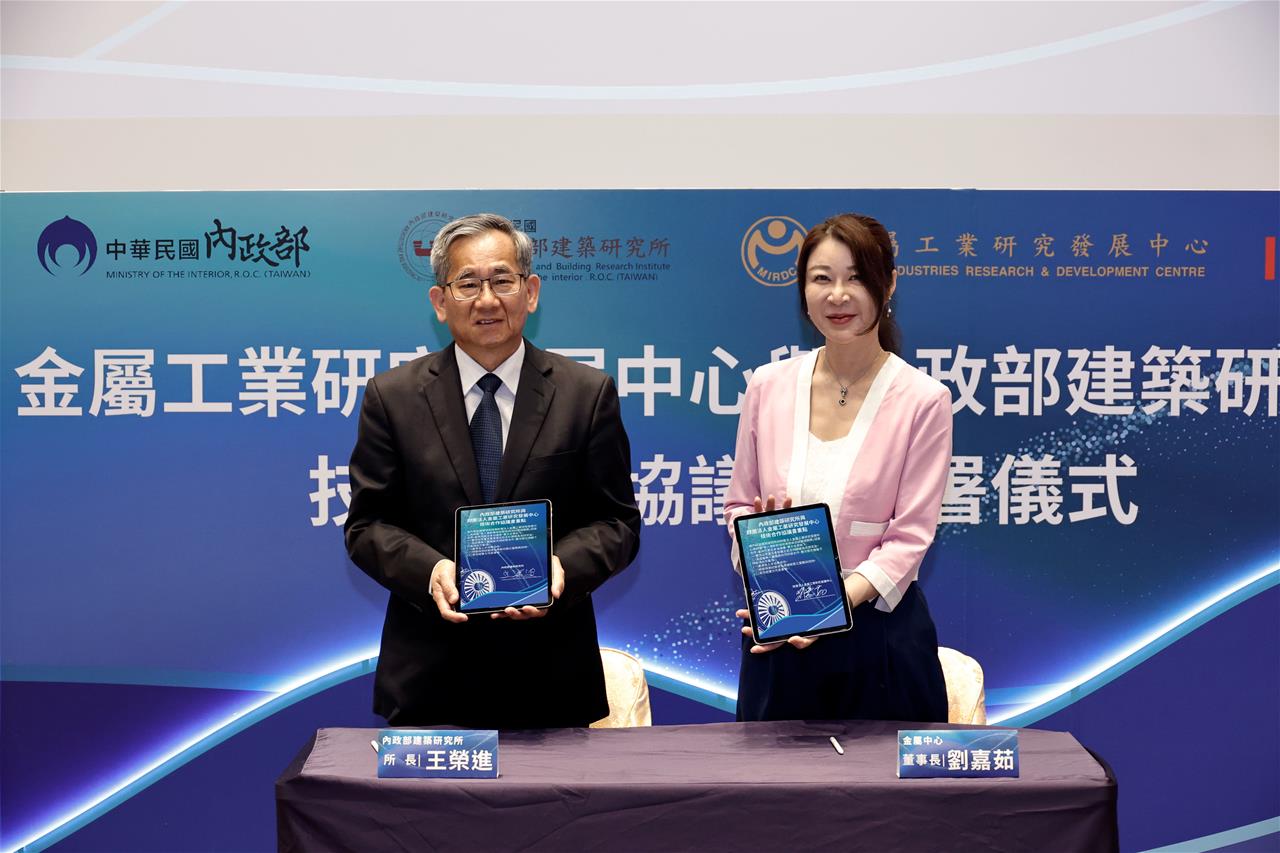
The growing frequency of extreme weather events and natural disasters has brought increased attention to building structural safety and rapid disaster response capabilities. To improve the effectiveness of drone applications in complex environments, the Metal Industries Research & Development Centre (MIRDC) and the Architecture and Building Research Institute (ABRI), Ministry of the Interior held a Memorandum of Understanding (MOU) signing ceremony at the Traditional Industries Innovation Center, Ministry of Economic Affairs on the 8th. This collaboration will leverage the strengths of both parties in the R&D of drone technologies and storm and wind tunnel testing facilities, with the aim of advancing drone applications for post-earthquake structural inspections, hotspot detection after fires, and equipment inspections in high-risk environments, thereby strengthening Taiwan’s technological capabilities for disaster response.
During the signing ceremony, the MOU was signed by Director-General Rong-Jing Wang of the ABRI and Chairman Chia-Ju Liu of the MIRDC, symbolizing the future use of the wind tunnel laboratory in verifying the operational stability of drones in extreme conditions, such as strong winds, turbulence, and torrential rain, establishing a science-based, standardized drone performance testing process that will improve the reliability of drones in practice when inspecting disaster areas. Chairman Chia-Ju Liu of the MIRDC stated that the core value of drone technology is the ability to carry out missions in environments that are difficult for humans to quickly reach. This requires simulating the harshest operating conditions in the development phase, and the collaboration with the ABRI to utilize storm and wind tunnel testing equipment will be a key driver of breakthroughs in Taiwan's drone industry.
Director Chih-Wei Chien of the Aerospace Science and Technology Industry Development Department, MIRDC emphasized that the government's active promotion of five trusted industry sectors in recent years, including artificial intelligence, semiconductors, military industry, security and surveillance, and next-generation communications, will provide policy support and a wide range of application scenarios for the development of drone technologies. This will further support the localization of the drone supply chain, develop information security as well as security and surveillance technologies, and ultimately drive industrial upgrade, strengthen national security, and enhance international competitiveness. These technological advancements will not only improve the performance of drone applications, but also drive the development of drone technologies across military, security, and transportation applications.
The MIRDC's drones are currently capable of being applied in power inspections, fish detection in deep sea fisheries, wind turbine blade inspections, and mountain rescue missions. Moving forward, these experiences will be further extended to post-disaster structural assessments, personnel rescue, and equipment scanning in high-risk factory areas. The MIRDC aims to establish standard procedures for drone testing in extreme weather conditions through the collaboration, and will introduce domestically manufactured key drone components for highly reliable applications, thereby raising the technological threshold and enhancing the international competitiveness of the entire drone industry chain. In the future, the two parties will take this collaboration as a starting point to jointly develop more solutions for safe, immediate, and autonomous unmanned systems, thereby enhancing Taiwan's overall technological capabilities in disaster response and urban safety governance.